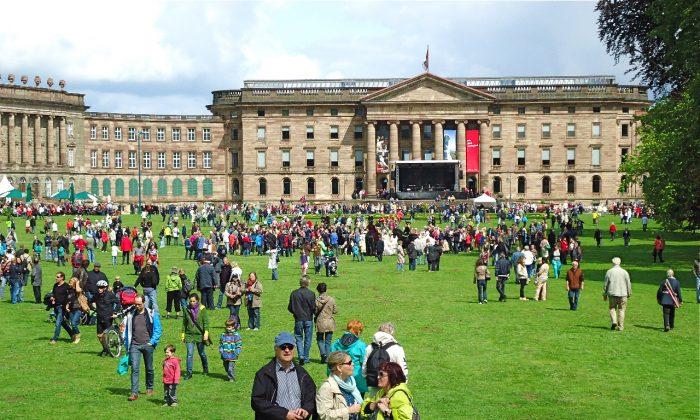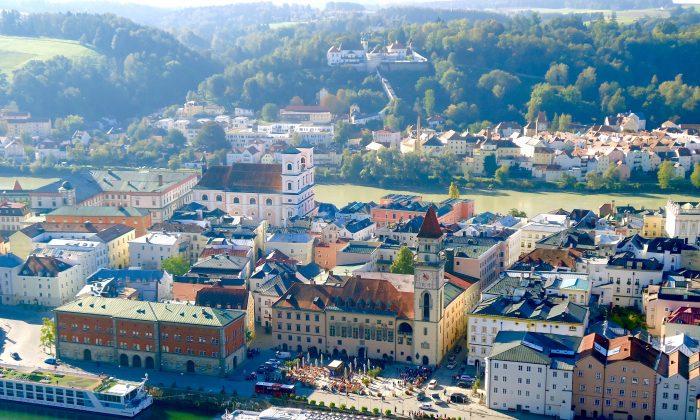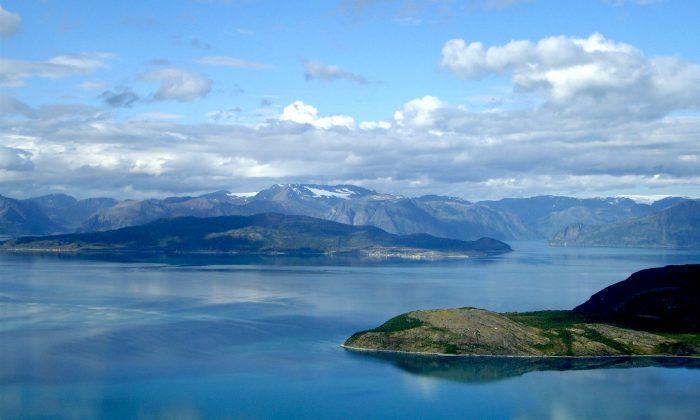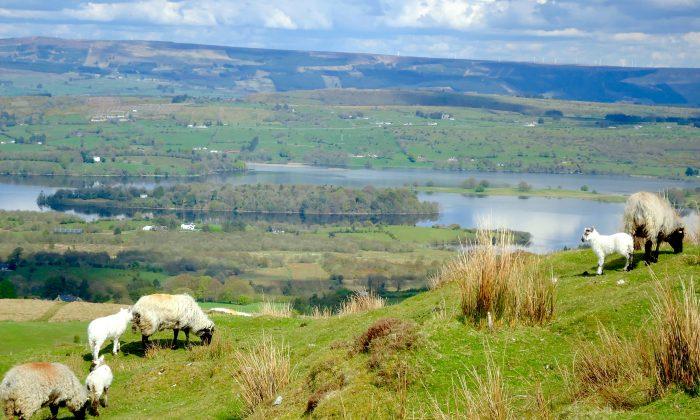On June 23, the Baroque palace, park and unique water gardens of Wilhelmshohe, a former royal playground in the central German town of Kassel, were designated the 38th UNESCO World Heritage Site in Germany.
From a 1640-foot-high (500-meter) ridge at the eastern edge of the Habichtswald forest to the extensive multi-winged palace spreading across the valley at its foot, UNESCO’s new Heritage Site is larger than life. On top of the ridge stands a monumental octagon crowned by a 27-foot-high copper reproduction of the Farnese Hercules. From the windows of the octagon visitors can see for miles. The woods and park between here and the palace provide a dramatic backdrop for the interplay of spectacular man-made features that engage the landscape in an on-going dialogue between the liquid nature of water and the primal flow of the forest itself.
The largest hillside park in Europe, seven and a half miles of waterways run through some 590 acres. According to the UNESCO World Heritage Centre: ‘The special topography of the slope in Habichtswald forest made possible the outstanding and innovative artistic design behind this Baroque Bergpark (octagon with Hercules, succession of cascades) and the romantic landscape park with its water features. This artistry with water makes the grounds a unique work of landscaped garden art. Both Baroque and romantic design elements are subordinated to the leitmotif of the total control of and spectacular staging of the element of water.’
Begun at the end of the 17th century by Landgrave Karl of Hesse-Kassel, the site was ultimately named for one of his later successors, William I, Elector of Hess, who created the palace in 1786. The palace houses an outstanding collection of art, with paintings by Rembrandt, Rubens, Frans Hals and Lucas Cranach, but the special quality of Wilhelmshohe comes from its spectacular water gardens with their cascades, waterfalls, fountains and jets which dominate the landscape. Everything operates by gravity without the benefit of pumps or other machinery. There are no rivers or springs on the site so behind the gigantic statue of the demigod Hercules, a reservoir was built to collect groundwater and winter rains. These feed the cascades and fountains further down the slope. From the reservoir the water descends for 250 feet along the natural gradient caught and sculpted like liquid glass in a seemingly endless series of pools, falls and rustic rock emplacements.
Hiking to the base of the Hercules statue can require a Herculean effort but on June 29th of this year, in celebration of UNESCO’s recent announcement, hundreds of locals and tourists were doing just that. The reservoir was to be opened for the fountains to play, an event that usually happens only twice a week during the summer. From the top of the Hercules octagon, like watching the tide coming in, water slowly filled each successive pool and began to tumble down the maze of catchments of the Grand Cascade that ultimately runs to a lake in front of the palace. Geysers shot into the air and water powered the metal trumpets of marble centaurs who stood watch below. Their clamor was deafening.
Following the course of the water down the hillside were 500 stone steps leading to the first pool and then a choice of woodland paths leading to a dripping imitation Roman aqueduct, a half-moon bridge and an elaborate folly built like a ruined medieval castle called Lowenburg. The myriad of pools, cascades and architectural features all lead to the grand lake at the bottom of the slope. Here crowds gathered waiting for the piece de resistance, a jet stream bursting from the lake that, even today, is still the most powerful geyser of its kind in the world. Exploding 175 feet in the air, it blasted from the lake’s calm surface like a liquid volcanic eruption. Even as they got soaked, watchers cheered in amazement. They were in no doubt that Wilhelmshohe had earned its rightful place on the UNESCO World Heritage List.
Susan James is a freelance writer based in Los Angeles. She has lived in India, the United Kingdom, and Hawaii and writes about art and culture.






Friends Read Free